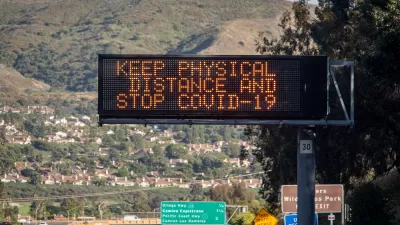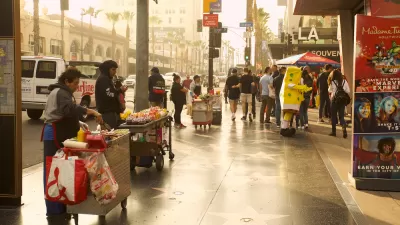Kerwin Datu suggests that transit in cities of the future should no longer be organized around a distinct center. "Rather than think of a city as a centre surrounded by suburbs, think of it as a patchwork of specialised districts woven together."
Datu asks "what is the center?" Often it is a historical, commercial or financial district but he pointedly argues that there is no need for either of these to be "at the centre of a large city, nor in the same place, and it would make for better planning if we abandoned the myth of the city centre altogether."
He argues that the importance of the city center around the world is more often than not the result of a self-fulfilling prophecy. Most older city centers have been subject to an upward spiral of infrastructure investment which has fortified their hollow pre-eminence within the metropolis.
Datu states that rather than reduce congestion, increased public transport merely increases a city's commuting capacity, most often with an intense centralizing effect.
"Large cities today need to be planned not in concentric circles, but as tapestries. We still need differing degrees of intensity across urban areas, but these should be planned as an orderly modulation of intensity throughout the metropolis."
FULL STORY: A City Doesn't Need A Center! (But It Does Need Realistic Planning)

Maui's Vacation Rental Debate Turns Ugly
Verbal attacks, misinformation campaigns and fistfights plague a high-stakes debate to convert thousands of vacation rentals into long-term housing.

Planetizen Federal Action Tracker
A weekly monitor of how Trump’s orders and actions are impacting planners and planning in America.

In Urban Planning, AI Prompting Could be the New Design Thinking
Creativity has long been key to great urban design. What if we see AI as our new creative partner?

King County Supportive Housing Program Offers Hope for Unhoused Residents
The county is taking a ‘Housing First’ approach that prioritizes getting people into housing, then offering wraparound supportive services.

Researchers Use AI to Get Clearer Picture of US Housing
Analysts are using artificial intelligence to supercharge their research by allowing them to comb through data faster. Though these AI tools can be error prone, they save time and housing researchers are optimistic about the future.

Making Shared Micromobility More Inclusive
Cities and shared mobility system operators can do more to include people with disabilities in planning and operations, per a new report.
Urban Design for Planners 1: Software Tools
This six-course series explores essential urban design concepts using open source software and equips planners with the tools they need to participate fully in the urban design process.
Planning for Universal Design
Learn the tools for implementing Universal Design in planning regulations.
planning NEXT
Appalachian Highlands Housing Partners
Mpact (founded as Rail~Volution)
City of Camden Redevelopment Agency
City of Astoria
City of Portland
City of Laramie





























